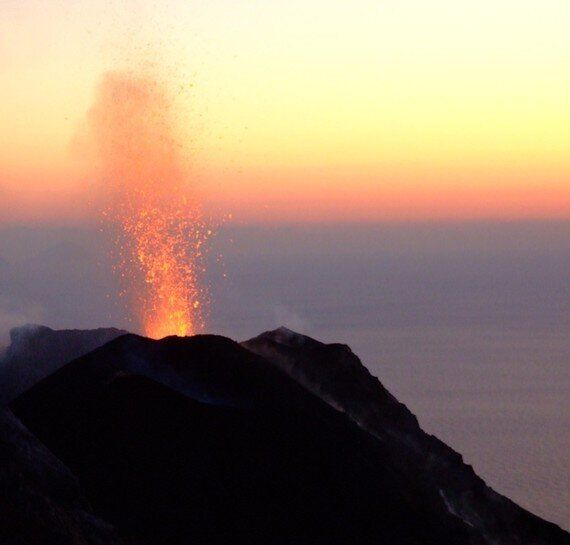
Atlantis, the Land that time forgot, the missing city, the erased civilisation, the lost continent. These words conjure up thoughts of childhood movies, of poorly animated dinosaurs and mythical beasts in a world we no longer know. The thoughts that Jacques-Yves Cousteau and the deep water submarine's, exploring never seen depths of the Earth, will somehow find a lost man made structure that will point to 'Atlantis'. I feel like heading to the sofa now armed with crisps and drinks to jump into one of these classics, but that's not the thing thats catching my eye. It's the reverse of Atlantis that seems to be going on, and the fascinating images of new islands that are popping up all over the world. We had the volcano of El Hierro, in the Canary Islands, threatening to increase the land mass of Spain (tourists hold your horses). Then an earthquake in Pakistan, prompted a mud volcano to breach a new island, with bewildered locals wondering round the newly exposed sea floor. In the last few days a new island has been formed in the Ogasawara island chain (also known as the Bonin Islands) some 1000 or so km south of Tokyo. It is no small matter, as chief the chief government spokesman of Japan chirped; "If it becomes a full-fledged island, we would be happy to have more territory."
Well, when a new island pops up, who actually owns it and has it ever caused a territory issue?? You have guessed it, the answer is actually a very interesting, YES! One of the most fascinating examples of a pop-up island, is that of Ferdinandea, a volcano offshore southern Sicily. It erupted in 1831, and it created its own little bit of history. The volcano broke the surface of the sea, resulting in an island some 4 km (2.5 miles) wide and prompted a frantic battle for sovereignty of this new 'strategic' Mediterranean real estate, with the British, Italians and French amongst others, planning their time-shares! Unfortunately the island was made mostly of loose volcanic tephra, and by 1832 it had been eroded back under the sea, though the Sicilians' have had a plaque placed onto the shallow volcano, should it rise again :-). One of the real classics when it comes to new islands was the eruption of Surtsey, south of Iceland. In 1963, a volcanic eruption breached the surface of the sea and started to make a new Island. By June 1967, it had reached its maximum size of 2.7 km. Now it is a UNESCO world heritage site. It must be one of the most exciting things to see and to set foot on new land, where no one else has been before. In the case of Surtsey it has become a wonderful natural laboratory to see what plants, insects and animals first colonise it, and it stands as a lasting legacy of how land can emerge from the seas like reversing Atlantis. In today's world of fast news and quick pictures we can also watch and gaze in amazement at the images of these new lands coming to life.
